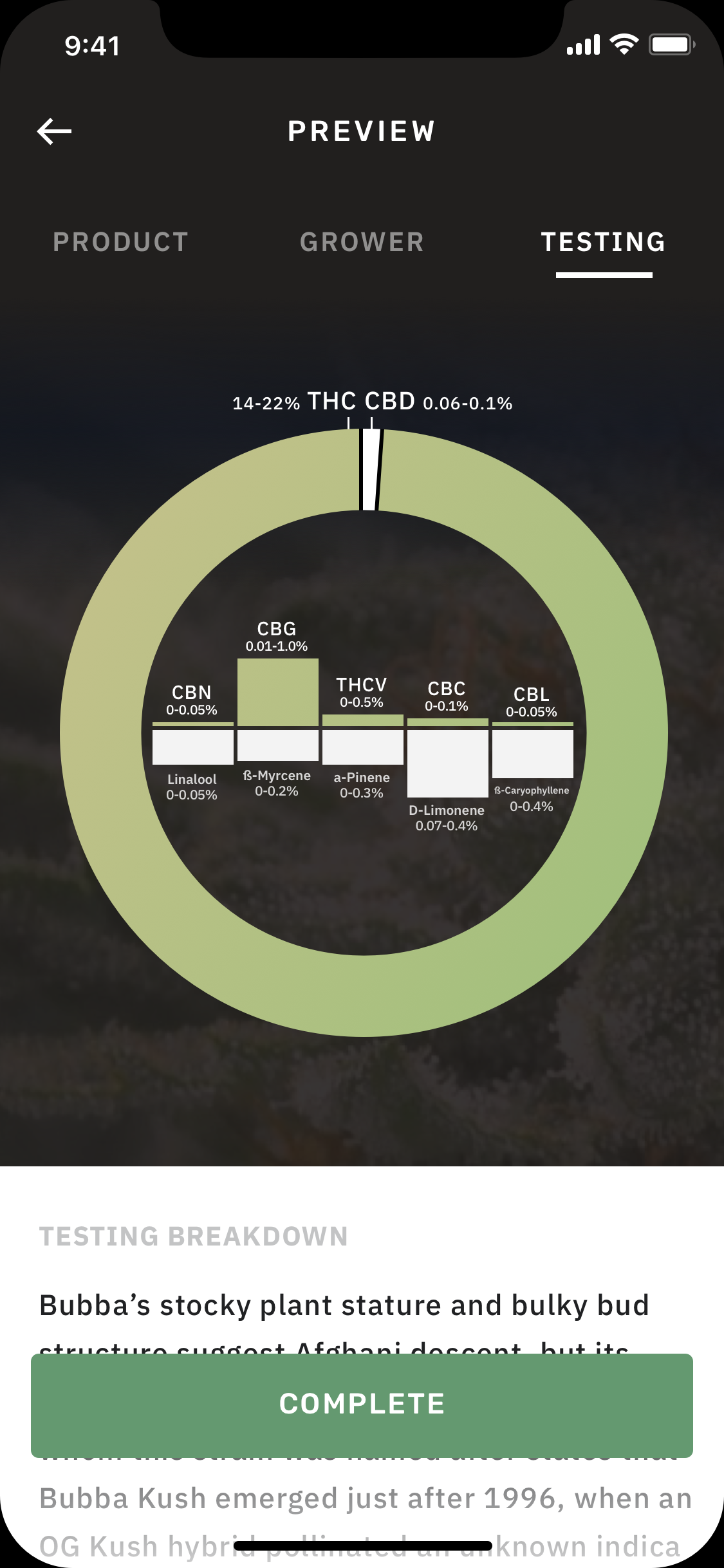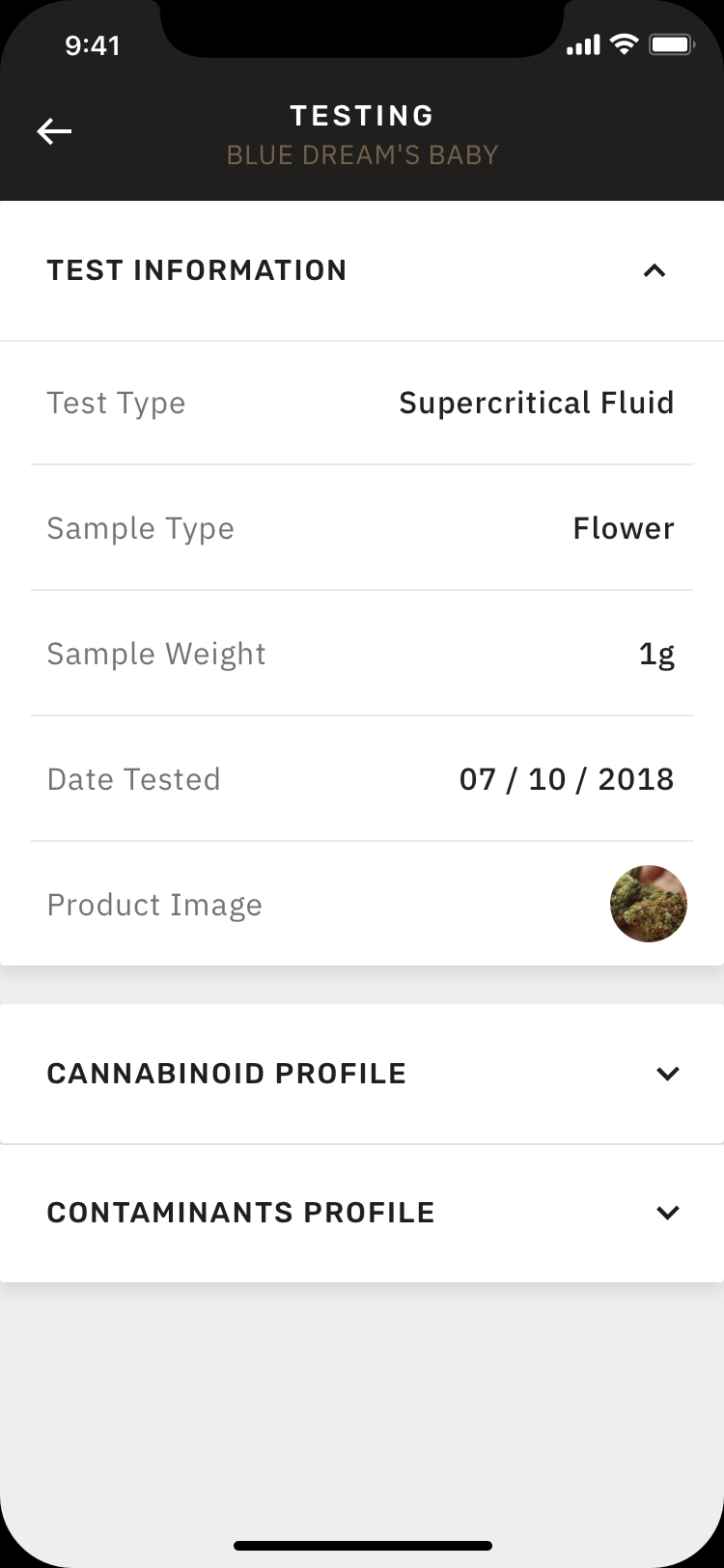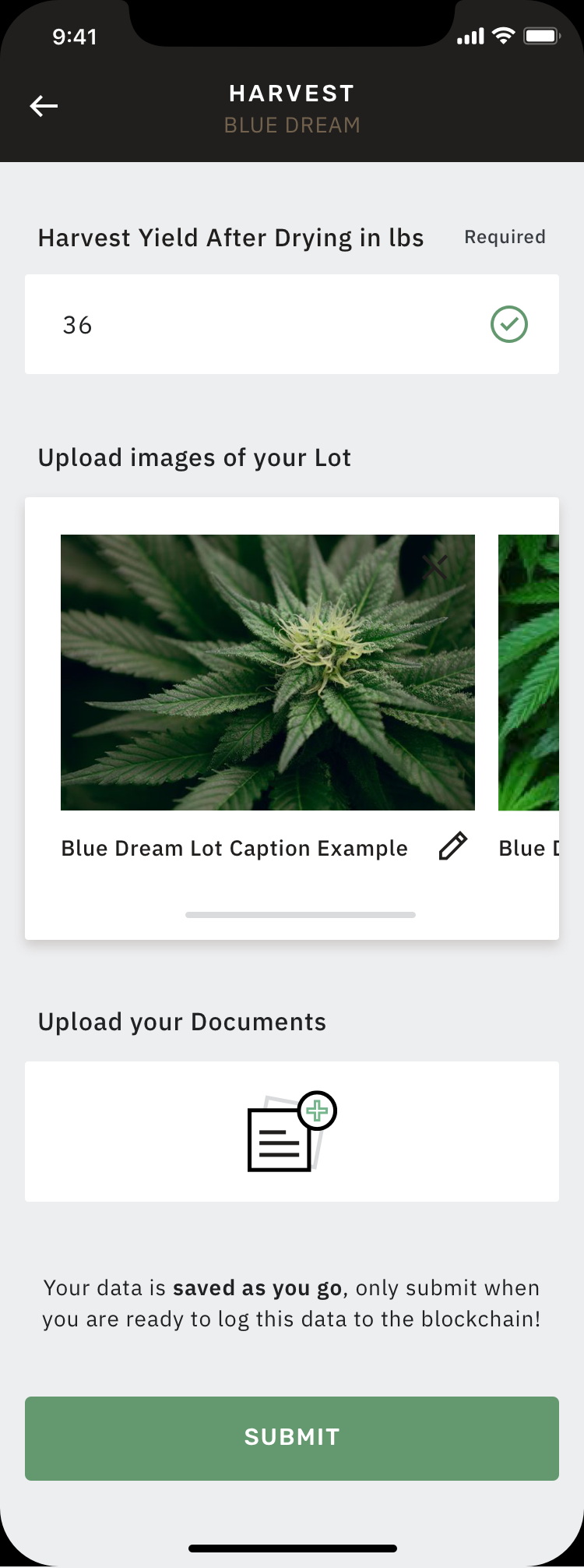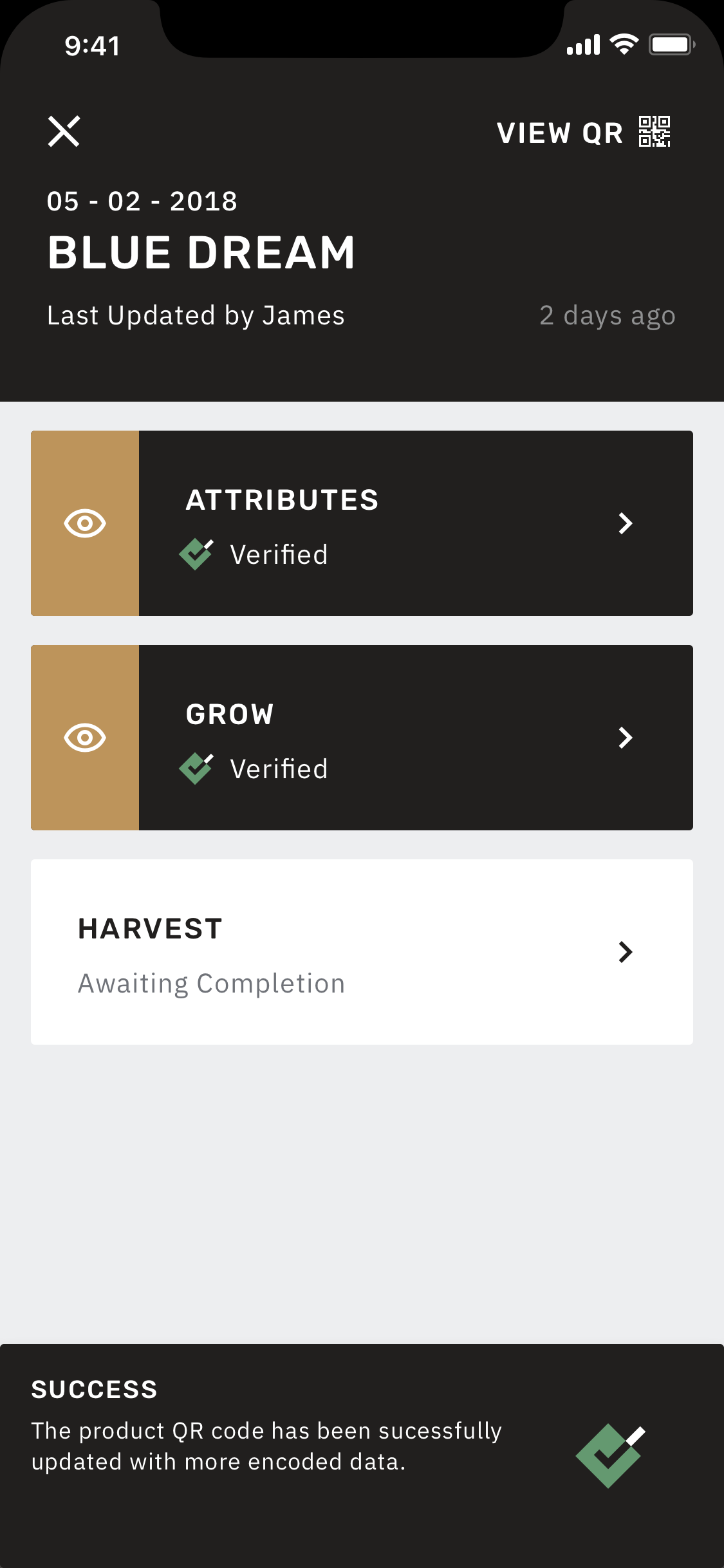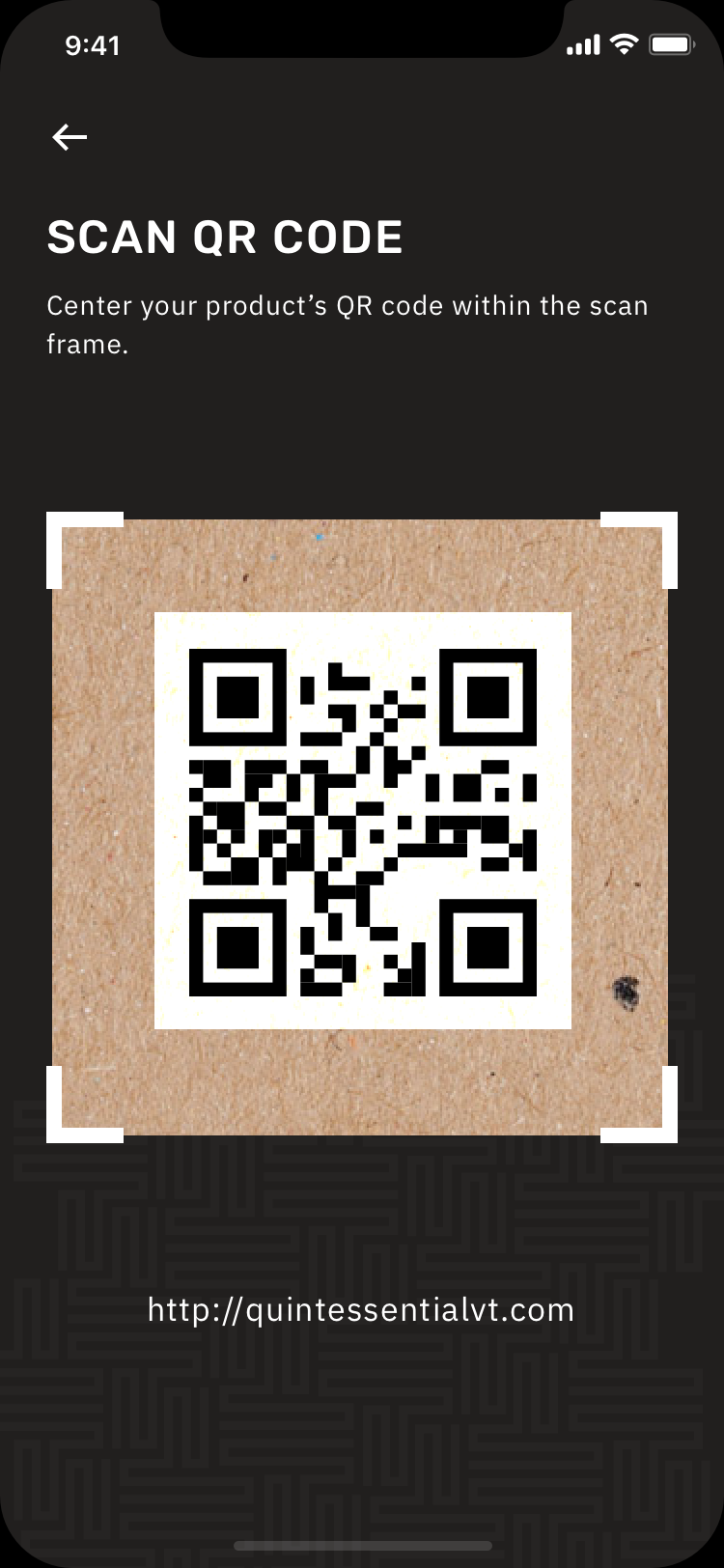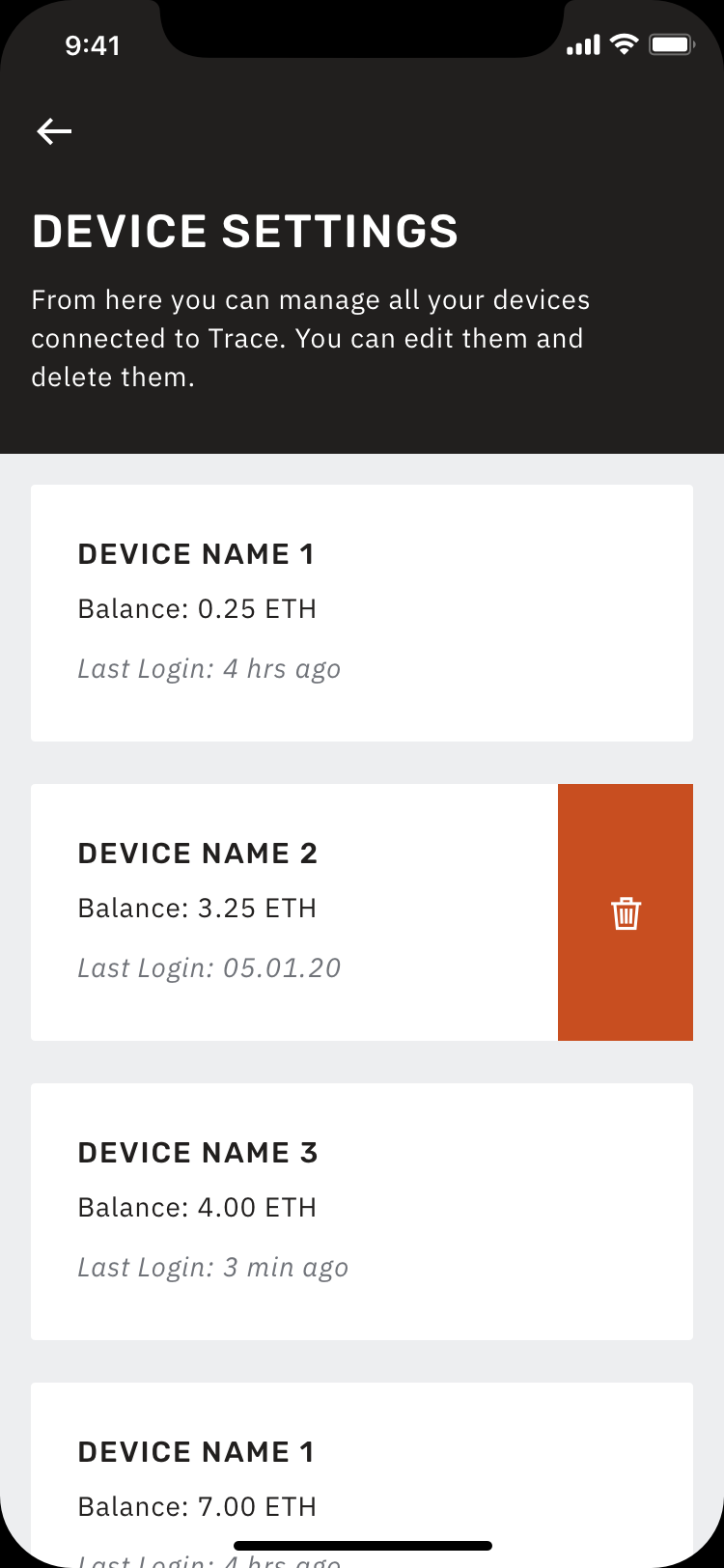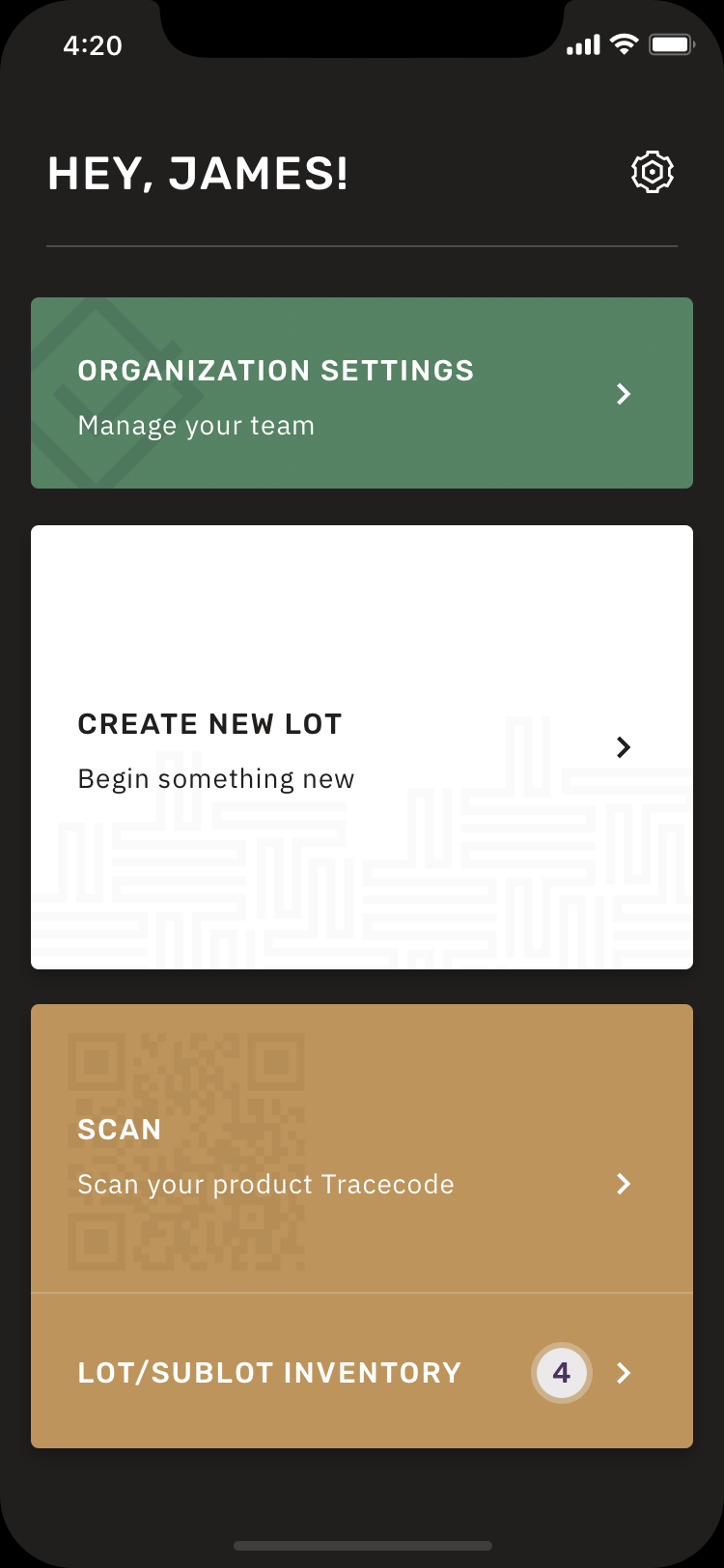Trace is a powerful suite of supply-chain tracking tools for the hemp and cannabis industries.
Product Strategy | Product Management | User Experience Design
The Need
Trace was a product company dedicated to providing tools to the hemp and cannabis industries that allow for easy, trusted, verifiable tracking of hemp plants and products throughout their lifecycle.
Discovery
The first step in any successful product effort is to discover what our target user base actually wants, and how we can best provide those features.
Step 1: Gather Requirements
Product scoping and strategy always starts with a series of interviews. Our team would interview both internal and external stakeholders to learn about the industry and their current processes and routines, so we could deliver a feature set that would not disrupt their current work-flow while also providing a significant upgrade in efficiency and convenience.
Step 2: Identify Market Fit
After several interviews with all relevant stakeholders, the product team would begin researching the current market and other players, big and small. We would create a matrix identifying what each other product did well, what we believed they did do well, and where we thought we could differentiate ourselves from competitors.
Step 3: Build User Personas
With requirements gathered and a solid market opportunity identified, we started building user personas. Building these personas would ensure that each feature and benefit identified in the later steps was targeted towards a real user with an actual need. This helps to cut down on feature bloat so we were delivering a streamlined, efficient product on time and under budget.
Product Scoping
With the discovery process completed, we would start building a feature list, creating a roadmap, and designing the UI/UX.
Step 1: Create Benefits and Features
The product team would meet again with internal and external stakeholders to create a set of concrete benefits that we would provide to our users, written in the following format: “As a [user type or persona] I want to [take an action] so that I can [receive a benefit].” After identifying all required benefits, the product team would meet with engineering to identify what features we would be building and how those features would provide one or multiple corresponding benefits.
Step 2: UX and UI Design
At this point, we were ready to start defining the user experience flows and designing out the user interface. Product would work with the design team to create user journeys and flows for each section or feature set in the application. After this was vetted and reviewed, the design team would build a user interface for each feature set, using an established design and branding language.
Step 3: Build a Development Roadmap
After all the features, UI, and UX were approved by stakeholders, the product and engineering teams would build a development roadmap that predicted when features would be delivered and in what order. This roadmap gives stakeholders visibility into our progress, and helps the development team stay on track during development. The roadmap would be adjusted throughout the development process to reflect changes in priority and timeline.
Development and Project Management
At this point, we are ready to start building the application. We would roll out features individually so that our users could start using the app as soon as possible.
Kanban Project Management
For our development process, we utilized the tools and philosophies of Kanban. Originally created for auto manufacturing, Kanban focuses on developers pulling work to themselves when they are ready for it. Developers were encouraged to raise issues where and when they were encountered, which resulted in a constantly evolving process. We conducted bi-weekly team-wide progress update meetings. On days where meetings were not scheduled, updates would be delivered through slack. Constant, honest communication is the key to a functional development process.
Regular Stakeholder Check-ins
Three times a week, a representative from the engineering team and I would meet with our external stakeholders to provide progress updates. During these meetings, we would honestly and openly discuss our progress as it related to the roadmap, make adjustments as needed, and identify features that were ahead of schedule, on time, or at risk of being delivered late. These meetings also allow the stakeholders to ask questions about our process and raise concerns, if any existed.
Testing
I firmly believe that for a product to be successful, everyone on the team should be open and willing to test when needed. As a product manager, this is one of my most essential roles. We took a test-driven approach to development, creating tests before any code was written. This direction eliminates 90% of all bugs before the code is committed, but finding that last 10% is the responsibility of everyone else. As soon as a feature was pushed to our staging environment, I would thoroughly test and report bugs until that feature was ready to be delivered to our stakeholders.
In Collaboration With the Vermont Agency of Agriculture.
Trace was contracted to work directly with the Vermont Agency of Agriculture, Food and Markets (VAAFM) to build a track and trace solution for their budding hemp industry. Currently, every grower, processor, and laboratory in the state of Vermont uses the Trace platform to apply for applications and track their hemp crops and products.
Hemp Portal Features
The Vermont Hemp Portal is a bespoke set of tools that streamline the process of applying for hemp certifications, and tracking all hemp grown and processed in the state.
Streamlined Registration
The Hemp Portal handles 100% of all registrations and applications for hemp growers, processors, and laboratories in the state of Vermont. Our product team translated multiple, disparate paper application forms into a single online form that smoothly gathers all information required to help regulators review and approve applications. Our focus for this feature set was on a clear user experience and high performance during periods of heavy traffic.
Convenient Track and Trace
In addition to helping applicants with the registration process, the Hemp Portal also provides a set of tools for tracking hemp through it’s lifecycle, from growing, testing, and processing to finished a finished product. Each lot is given a unique, trackable ID that follows that lot throughout it’s lifecycle. These tools allow growers and processors to spend less time recording information and more time creating great hemp products.
Powerful Regulator Tools
The Hemp Portal provides a wide array of tools for agency regulators to manage applications and keep track of all hemp grown and processed in the state. These tools include robust reporting, application review, editing and approval tools, and an easily readable list of hemp organizations in the state. These tools reduce time and confusion associated with regulating the hemp program in Vermont.
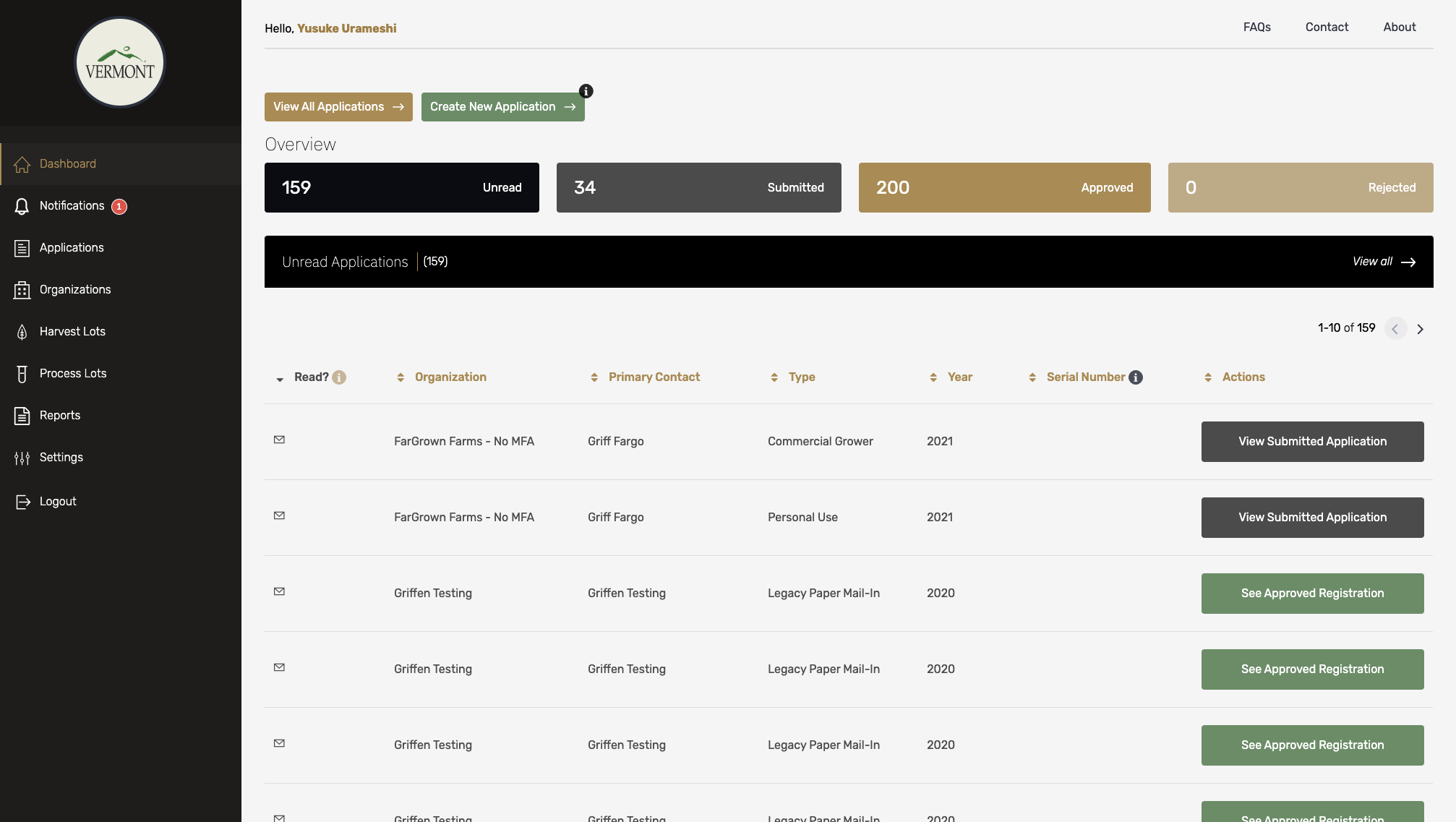
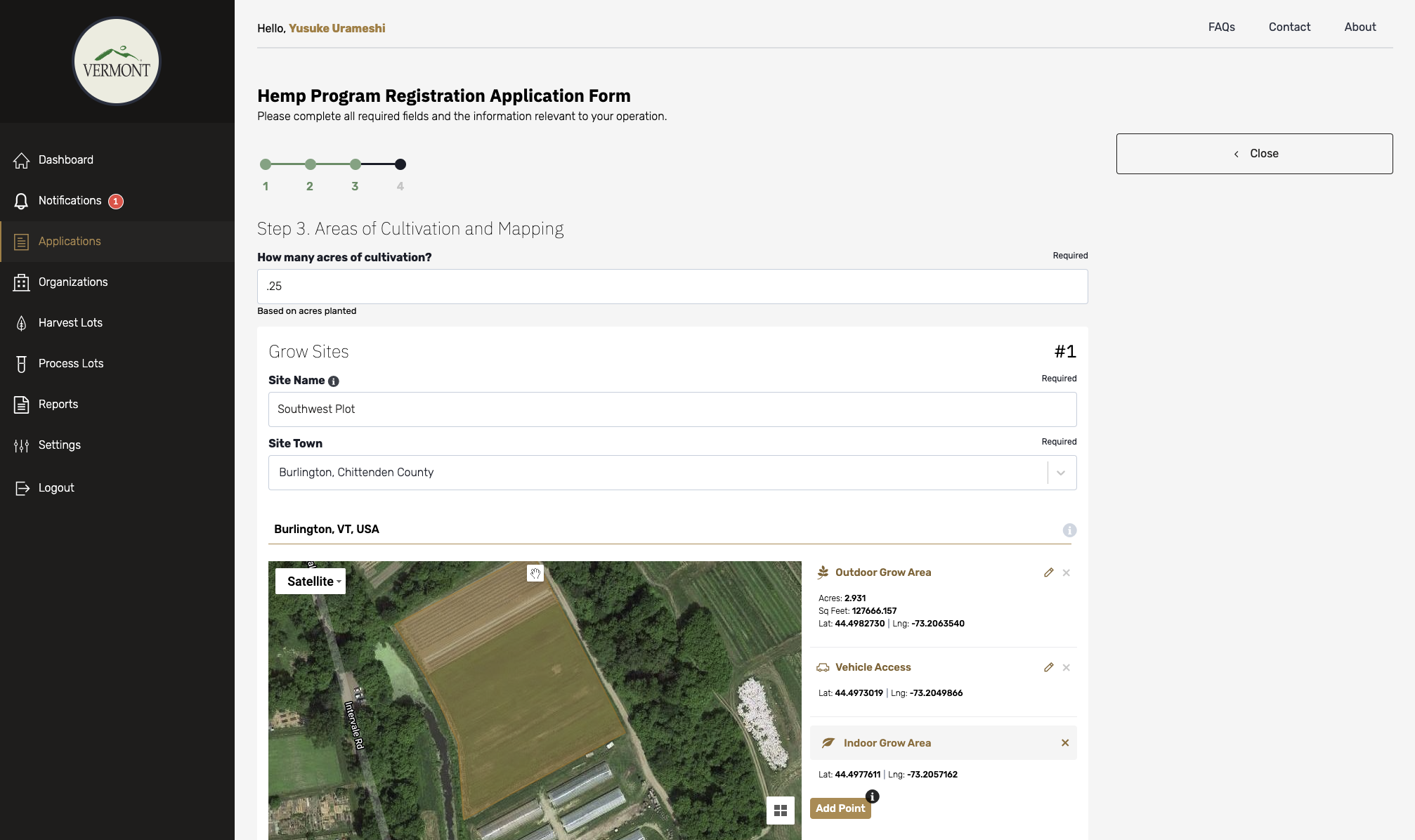
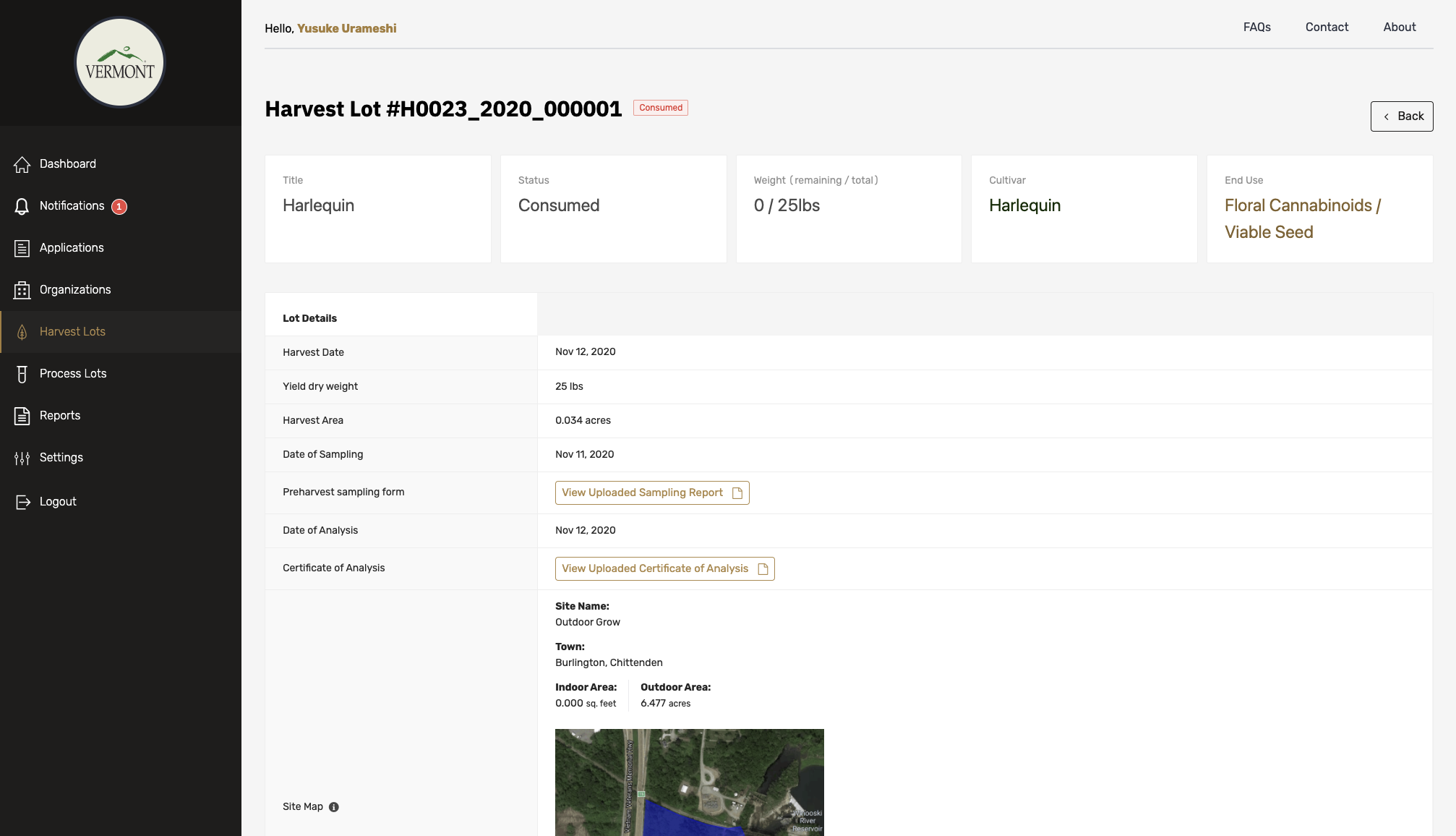
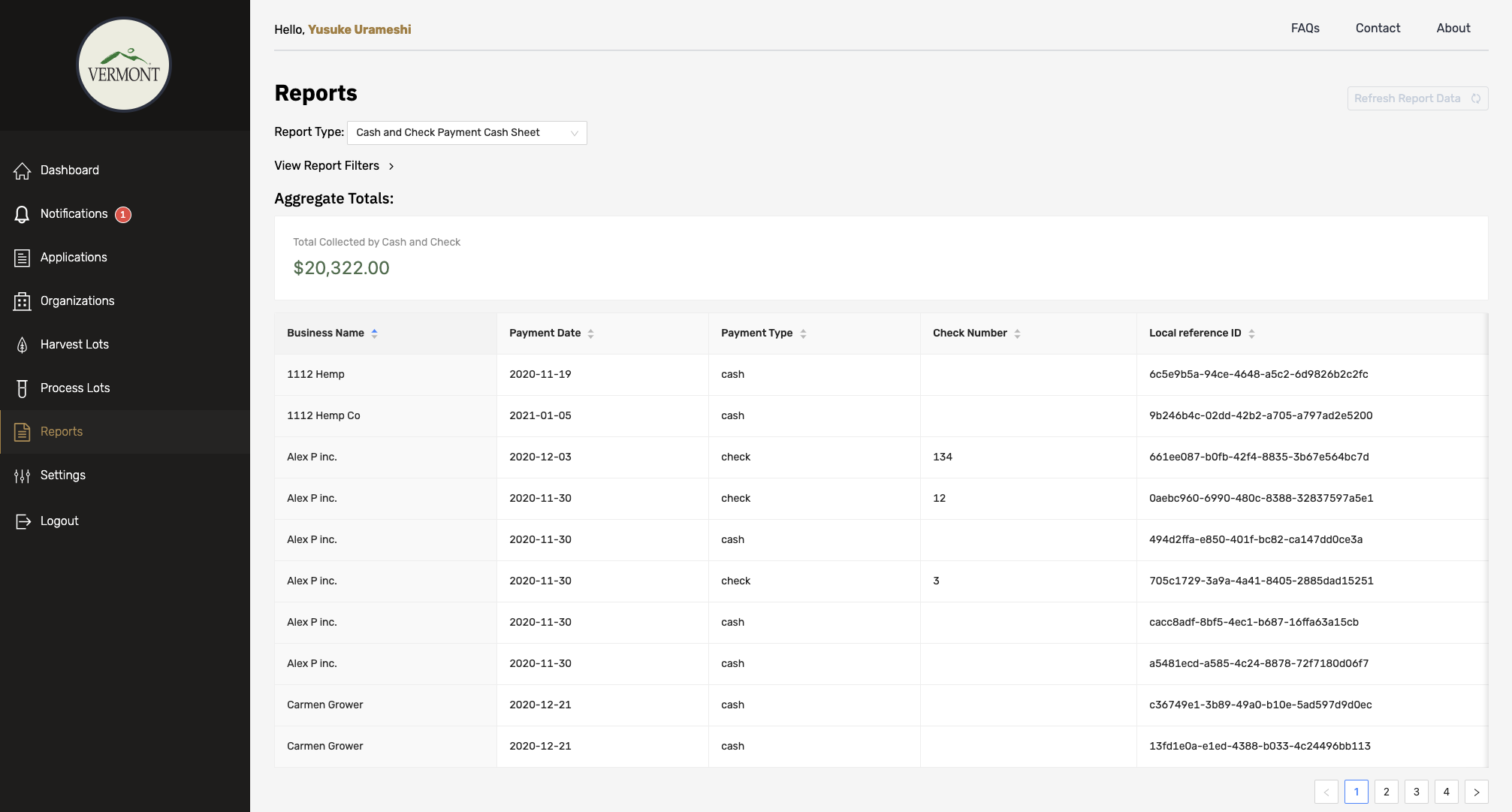
Mobile Track and Trace, Built on Ethereum and IPFS
In addition to the Vermont Hemp Portal, Trace also built a mobile application designed to help growers and processors capture data about hemp crops in the field. All data was stored on IPFS and hashed to the Ethereum blockchain, creating an immutable record of provenance and activity.
Mobile Track and Trace Features
Our mobile track and trace solution was a white-labeled solution built iOS and web as a Progressive Web App.
Build with Ethereum and IPFS
Our mobile track and trace solution allowed users to record data immediately in the field. Once submitted, that data was saved as a file on IPFS along with other media, like test results and photos. Each IPFS file update was hashed to the Etherem Blockchain. This provides an immutable timestamp of when and what data was recorded. Any changes to data or transfers of ownership were recorded and could be audited by other users within the organization.
Limited Manual Input Required
Each plant, batch, and product was given a unique label with a GS1 formatted code and scannable QR. In connection with IOT enabled devices, the app allowed workers to record important datapoints about a plant with minimal manual data entry required. This created a product that collected large amounts of data very quickly, and with minimal disruption to users’ workflow.
Transparent Product Profiles
Once a final product was completed and packaged, a QR code was printed and attached to the label of the final product. this QR code could be scanned by anyone with a smart phone to see valuable information about the product they were holding including: chemical composition, contaminants test results, date and location of harvesting, which processing methods and chemicals were used, etc. Trace was able to provide transparency to an industry that is constantly struggling for legitimacy.
